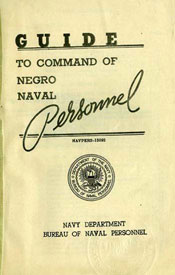The Rev. Dr. Martin Luther King, Jr. is my hero. His leadership, intellect, courage, and ambassadorship to white America and the world at large make him deserving of all the recognitions and honors that he’s received.
Yet, I am filled with ambivalence every time we come to another MLK Jr Day. Yes, Dr. King was a great man. But he was not an army of one.
The Civil Rights Movement had numerous heroes and martyrs. All of them deserve recognition. Rather than a day to celebrate the memory of King, I would have preferred a Nation Civil Rights Movement Day to celebrate all of those who were a part of the Movement.
For example, my other “favorite” super-hero from the Movement is Mississippi’s Fannie Lou Hamer. She started
working in the fields when she was six, and was only educated through the sixth grade. She married in 1942, and adopted two children. She went to work on the plantation where her husband drove a tractor, first as a field worker and then as the plantation’s timekeeper. She also attended meetings of the Regional Council of Negro Leadership, where speakers addressed self-help, civil rights, and voting rights.
In 1962, Fannie Lou Hamer volunteered to work with the Student Nonviolent Coordinating Committee (SNCC) registering black voters in the South. She and the rest of her family lost their jobs for her involvement, and SNCC hired her as a field secretary. She was able to register to vote for the first time in her life in 1963, and then taught others what they’d need to know to pass the then-required literacy test. In her organizing work, she often led the activists in singing Christian hymns about freedom: “This Little Light of Mine” and others.
She helped organize the 1964 “Freedom Summer” in Mississippi, a campaign sponsored by SNCC, Southern Christian Leadership Conference (SCLC), the Congress of Racial Equality (CORE), and the NAACP.
In 1963, after being charged with disorderly conduct for refusing to go along with a restaurant’s “whites only” policy, Hamer was beaten so badly in jail, and refused medical treatment, that she was permanently disabled.
Hamer is most famous for her work as Vice-Chair of the Mississippi Freedom Democratic Party, sometimes called the “Freedom Democrats,” in 1964. The Freedom Democrats challenged the seating of Mississippi’s all-white and anti-civil rights delegation to the Democratic National Convention of that year as not representative of all Mississippians. The Freedom Democrats brought national attention to the plight of black people in the state, and led to reforms in the way persons are seated at the Democratic Convention.
In 1972 the Mississippi House of Representatives passed a resolution honoring her national and state activism, by a vote of 116 to 0. This was an extraordinary recognition, given the state’s resistance to integration. Hamer died in Mississippi in 1977.

Fannie Lou Hamer, Freedom Democrat (Library of Congress photo)
To me, no understanding of the Movement can be complete without knowing her story. But as I talk to people about Civil Rights history, especially young people, I am saddened that they have little or no idea of who she was or what she accomplished.













